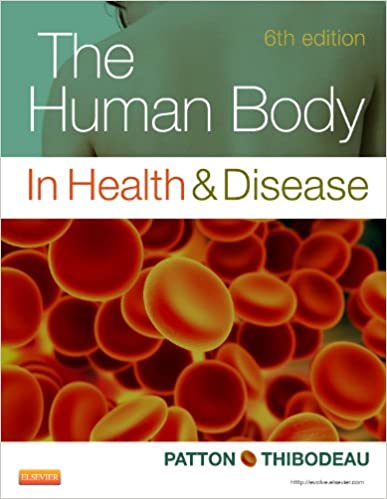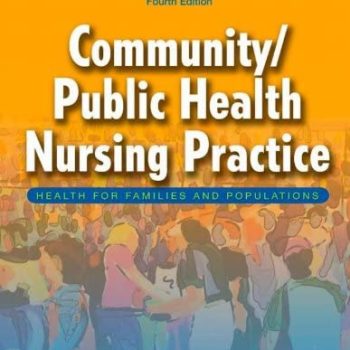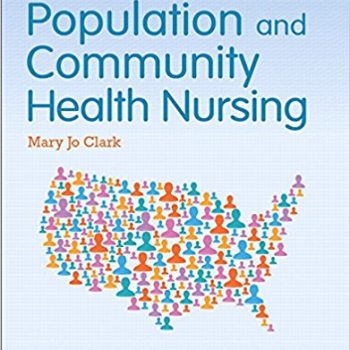Test Bank For The Human Body In Health And Disease 6th Edition By Patton
Chapter 2: Chemistry of Life Test Bank
MULTIPLE CHOICE
1.Which subatomic particle has a positive charge?
|
A. |
proton |
C. |
electron |
|
B. |
neutron |
D. |
nucleus |
ANS:APTS:1DIF:Memorization
REF: Page 27 TOP: Atoms
2.Which subatomic particle has no charge?
|
A. |
proton |
C. |
electron |
|
B. |
neutron |
D. |
nucleus |
ANS:BPTS:1DIF:Memorization
REF: Page 27 TOP: Atoms
3.Which subatomic particle has a negative charge?
|
A. |
proton |
C. |
electron |
|
B. |
neutron |
D. |
nucleus |
ANS:CPTS:1DIF:Memorization
REF: Page 27 TOP: Atoms
4.Which subatomic particle is found in the nucleus?
|
A. |
proton |
C. |
electron |
|
B. |
neutron |
D. |
both A and B |
ANS:DPTS:1DIF:Memorization
REF: Page 27 TOP: Atoms
5.Electrons are found
|
A. |
in the nucleus |
|
B. |
in orbitals |
|
C. |
at various distances from the nucleus called energy levels |
|
D. |
both B and C |
ANS: D PTS: 1 DIF: Application REF: Pages 27-28
TOP: Atoms
6.The atomic number of an atom is the number of
|
A. |
protons |
C. |
electrons |
|
B. |
neutrons |
D. |
both A and B |
ANS:APTS:1DIF:Memorization
REF: Page 27 TOP: Atoms
7.The atomic mass of an atom is the number of
|
A. |
protons |
C. |
electrons |
|
B. |
neutrons |
D. |
both A and B |
ANS:DPTS:1DIF:Memorization
REF: Page 27 TOP: Atoms
8.The subatomic particle that determines how an atom unites with other atoms is the
|
A. |
proton |
C. |
electron |
|
B. |
neutron |
D. |
both A and B |
ANS:CPTS:1DIF:Memorization
REF: Page 27 TOP: Atoms
9.An atom that contains 20 protons, 21 neutrons, and 20 electrons has an atomic number of
|
A. |
20 |
C. |
40 |
|
B. |
41 |
D. |
61 |
ANS: A PTS: 1 DIF: Application REF: Page 27
TOP: Atoms
10.An atom that contains 20 protons, 21 neutrons, and 20 electrons has an atomic mass of
|
A. |
20 |
C. |
40 |
|
B. |
41 |
D. |
61 |
ANS: B PTS: 1 DIF: Application REF: Page 27
TOP: Atoms
11.An atom that contains 20 protons, 21 neutrons, and 20 electrons has
|
A. |
a positive charge |
|
B. |
a negative charge |
|
C. |
no charge (electrically neutral) |
|
D. |
not enough information is given to determine its charge |
ANS: C PTS: 1 DIF: Application REF: Page 27
TOP: Atoms
12.Which of these elements is not one of the four elements that make up most of the human body?
|
A. |
carbon |
C. |
oxygen |
|
B. |
nitrogen |
D. |
calcium |
ANS:DPTS:1DIF:Memorization
REF:Page 28TOP:Elements, molecules, and compounds
13.Bonds that usually dissociate in water to form electrolytes are _____ bonds.
|
A. |
ionic |
C. |
organic |
|
B. |
covalent |
D. |
both B and C |
ANS:APTS:1DIF:Memorization
REF: Page 29 TOP: Ionic bonds
14.The bonds formed when electrons are shared are called
|
A. |
electrolytes |
C. |
covalent bonds |
|
B. |
ionic bonds |
D. |
inorganic bonds |
ANS:CPTS:1DIF:Memorization
REF:Page 30TOP:Covalent bonds
15.The process of dehydration synthesis
|
A. |
uses water to turn large molecules into smaller ones |
|
B. |
adds a molecule of water to the reactants |
|
C. |
converts smaller molecules into larger ones by removing water |
|
D. |
both A and B |
ANS:CPTS:1DIF:Memorization
REF: Page 31 TOP: Water









Reviews
There are no reviews yet.